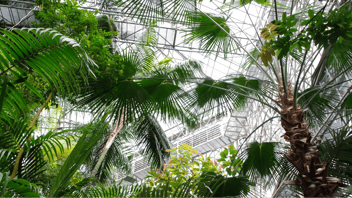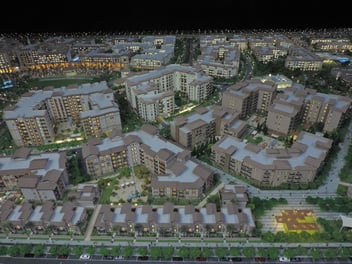What is Biophilic Design and How Can it be Used in Interiors?
What exactly is biophilic design and how does it benefit users? We sat down with Swati Rokade to learn more.
-
Apart from using plants how else can we introduce biophilia design to interiors?
The keyword is nature. Nature in space, nature of the space and natural analogues. As designers we can implement these in different ways and through different design elements. For example, as well as potted plants, we can use wall paneling and finishes obtained from natural/ organic materials which add an eco-feel and infuse a beautiful natural smell.
Cork or natural materials panels on the wall or on furniture pieces are also a great way to get creative while integrating a bit of nature within your space. Cork, for instance as a natural material, is becoming increasingly popular due to its antibacterial and acoustic properties.
Other options include creating green walls such adding water features such as aquariums - depending on the project, space, budget.
From small inclusions to a wider implementation, the options for a designer are endless.
-
Does being close to nature really have benefits?
Biophilia is certainly creating a buzz, although there still needs to be more awareness around it. Few are aware of the term and even fewer aware of the advantages.
However, buzzword or not, we cannot deny the benefits of a biophilic design.
As human beings, we have an inherent connection with nature. Whether it’s the beach or the mountains or the trees or grass, or a swim, these are all rejuvenating and restorative experiences for us helping us recharge and revive.
This inherent affinity to connect with nature is foundational to biophilic design.
Studies have indicated how natural elements and materials in an interior can improve numerous aspects of our life. A connection with nature, plants and water helps in releasing stress. It allows our minds and bodies to rejuvenate, which can improve focus and performance when studying or working.
In learning or working spaces, studies have shown a biophilic element implementation has resulted in an 8% increase of perceived wellbeing and 13% in creativity, and up to 25% in terms of ease of learning and focus. Similarly, exposure to natural auditory stimuli produced a 37% faster reduction in stress and cognitive fatigue.
Adopting the principles of biophilia correctly can improve cognitive function, enhance creativity and clarity of thought, improve our wellbeing, and expedite healing.
As the world population continues to urbanise, these qualities are even more important.
Biophilia is now widely considered crucially important to our physical and mental health. In design and architecture, biophilic is an evolution of sustainable design practices.
Sustainable design, while addressing the reduction of the carbon footprint in construction developments, focuses less on the human connection with the nature it tries to preserve whereas biophilia tackles this and delves into an informed strategy of principles which when implemented correctly can create a productive and rejuvenating environment.
.png)














